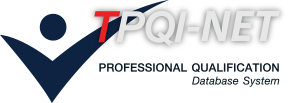หน่วยสมรรถนะ
Test and troubleshoot aircraft radio frequency navigation and communications.
สาขาวิชาชีพการบิน
รายละเอียดหน่วยสมรรถนะ
| 1. รหัสหน่วยสมรรถนะ | AVT-FTN-4-079ZA |
| 2. ชื่อหน่วยสมรรถนะ | Test and troubleshoot aircraft radio frequency navigation and communications. |
| 3. ทบทวนครั้งที่ | - / - |
| 4. สร้างใหม่ |
|
ปรับปรุง |
|
| 5. สำหรับชื่ออาชีพและรหัสอาชีพ (Occupational Classification) | |
|
|
|
| 6. คำอธิบายหน่วยสมรรถนะ (Description of Unit of Competency) | |
| This unit of competency requires application of hand skills and the use of system/component knowledge and applicable maintenance publications and test equipment to test and troubleshoot communication and radio frequency (RF) navigation systems and components of fixed and rotary wing aircraft during scheduled or unscheduled maintenance. Work may be completed individually or as part of a team. | |
| 7. สำหรับระดับคุณวุฒิ |
| 1 | 2 | 3 | 4 | 5 | 6 | 7 | 8 |
|---|---|---|---|---|---|---|---|
| 8. กลุ่มอาชีพ (Sector) | |
| 7232 Aircraft Mechanics | |
| 9. ชื่ออาชีพและรหัสอาชีพอื่นที่หน่วยสมรรถนะนี้สามารถใช้ได้ (ถ้ามี) | |
| N/A | |
| 10. ข้อกำหนดหรือกฎระเบียบที่เกี่ยวข้อง (Licensing or Regulation Related) (ถ้ามี) | |
| ICAO Doc 7192 / EASA Part 66 | |
| 11. สมรรถนะย่อยและเกณฑ์การปฏิบัติงาน (Elements and Performance Criteria) |
| หน่วยสมรรถนะย่อย (EOC) | เกณฑ์ในการปฏิบัติงาน (Performance Criteria) | รหัส PC (ตามเล่มมาตรฐาน) |
รหัส PC (จากระบบ) |
|---|---|---|---|
| 103408.01 Test/adjust RF navigation and communications systems. | 103408.01.01 Able to prepare Aircraft and system in accordance withapplicable maintenance manual for the application of power/systemoperation | 103408.01.01 | 71284 |
| 103408.01 Test/adjust RF navigation and communications systems. | 103408.01.02 Able to functionallytest RF navigation or communication system in accordance with maintenancemanual for evidence of serviceability or malfunction while observing allrelevant work health and safety (WHS) requirementsand perform system calibration or adjustments in accordance with maintenancemanual, as appropriate. | 103408.01.02 | 71285 |
| 103408.02 Troubleshoot RF navigation and communications systems. | 103408.02.01 Able to use available information from maintenancedocumentation and inspection and test results, where necessary, to assist infault determination and ableto use maintenance manual fault diagnosis guidesand logic processes to ensure efficient and accurate troubleshooting to linereplacement level | 103408.02.01 | 71286 |
| 103408.02 Troubleshoot RF navigation and communications systems. | 103408.02.02 Able to obtainspecialist advice, where required, to assist with the troubleshootingprocess, locate RF navigation or communication system faults and the causesare clearly identified and correctly recorded in maintenance documentation,where required. | 103408.02.02 | 71287 |
| 12. ความรู้และทักษะก่อนหน้าที่จำเป็น (Pre-requisite Skill & Knowledge) | |
|
|
|
| 13. ทักษะและความรู้ที่ต้องการ (Required Skills and Knowledge) | |
|
(ก) ความต้องการด้านทักษะ
(ข) ความต้องการด้านความรู้
|
|
| 14. หลักฐานที่ต้องการ (Evidence Guide) | |
|
• relevant regulatory requirements and standard procedures. |
|
| 15. ขอบเขต (Range Statement) | |
|
• Industry standard procedures specified by manufacturers, regulatory authorities or the enterprise |
|
| 16. หน่วยสมรรถนะร่วม (ถ้ามี) | |
| N/A | |
| 17. อุตสาหกรรมร่วม/กลุ่มอาชีพร่วม (ถ้ามี) | |
| N/A | |
| 18. รายละเอียดกระบวนการและวิธีการประเมิน (Assessment Description and Procedure) | |
|
• This shall be established via the records in the Log of Industrial Experience and Achievement or, where appropriate, an equivalent Industry Evidence Guide . |
|
